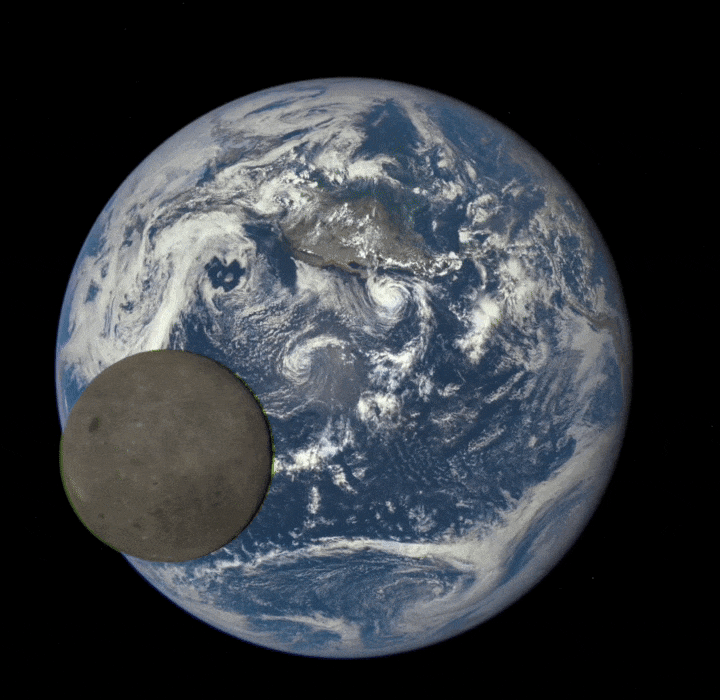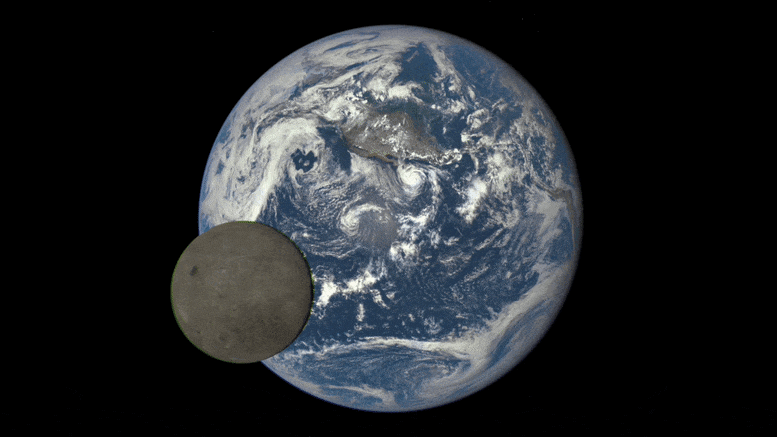
Esta animación presenta imágenes satelitales reales del lado oculto de la luna, iluminado por el sol, mientras cruza entre la cámara de imágenes policromáticas de la Tierra (EPIC) y el telescopio de la nave espacial DSCOVR, y la Tierra, a un millón de millas de distancia. Crédito: NASA/NOAA
Aunque parece falso, este video viral de la Luna orbitando la Tierra es real. Simplemente no es nuevo, a pesar de que ha vuelto a circular esta semana; en realidad fue capturado hace más de 6 años.
En 2015, un[{” attribute=””>NASA camera aboard the Deep Space Climate Observatory (DSCOVR) captured this unique series of images displaying the ‘dark side’ of the moon. The ‘dark side’ of the moon is often used to refer to the hemisphere of the moon that is facing away from Earth. However, it is more properly called the ‘far side’ as it is exposed to an equal amount of sunlight as the side facing Earth. We can never view the ‘far side’ from Earth due to a phenomenon called tidal locking, which occurs when an astronomical body takes the same amount of time to complete a full rotation around its axis and fully orbit around its partner.
Although DSCOVR’s primary purpose is to monitor solar winds for the National Oceanic and Atmospheric Administration (NOAA), the satellite also houses NASA’s Earth Polychromatic Imaging Camera (EPIC) which captured these images. This four-megapixel CCD camera and telescope maintains a constant view of Earth as it orbits and takes 13-22 images every day.
In order to capture Earth’s ‘natural color’, NASA combines three different monochrome exposures taken 30 seconds apart. The final combined image has a slight green offset to the right of the moon and thin blue and red offsets to the left of it which is due to the Moon’s movement between each exposure.
If you wish to view more images taken by EPIC, NASA publishes daily color images of different views of the Earth as it rotates throughout the day.

“Amante de los viajes. Pionero de Twitter. Ávido gurú de la televisión. Aficionado a Internet galardonado”.

